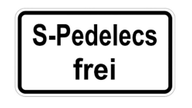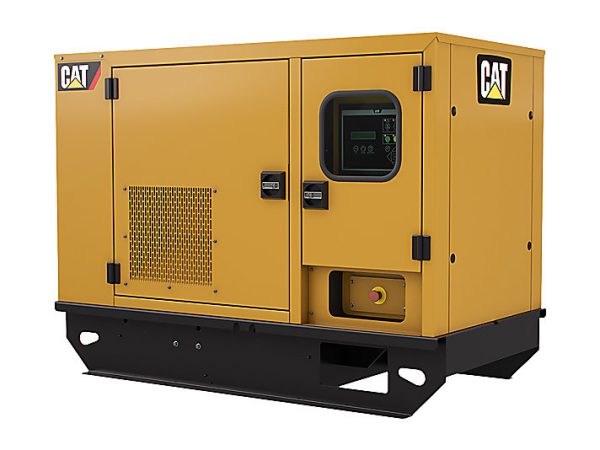And to put the power value of 800 Watt in relation: An average human is unlikely to go with more than 150 Watt over a sustained period. If you put this into this web computer:
http://kreuzotter.de/deutsch/speed.htm
http://kreuzotter.de/english/espeed.htm
you get a speed of 27 km/h for a road bike. If you put 800 Watt in for such a bike, you get a speed of 49 km/h (which in Germany is the general inside-village speed limit which is anachronistically high, and is slowly being replaced by 30 km/h where you have bicycles, pedestrisns, or schools).
That also means that an e-bike with 800 Watt power is actually a light motorcycle, with all the associated risks.
From the interview:
The whole industry is worried, but it’s not about one company. With motors like these, we are moving further and further away from bicycles, and as an industry, we risk e-bikes being regulated by the EU. So far, e-bikes have been treated the same as bicycles in the EU. And we as the ZIV want to protect this status. To achieve this, we need to clarify the gray areas in regulation that define what is and what is not a bicycle. And two values are important here: performance and the ratio between rider power and motor power.
In this respect, DJI achieves values with the Avinox motor with 1000 watts and 800 percent muscle gain that did not exist before.
As I said, it’s not just about one specific brand. It’s about everyone pushing the performance values upwards. And the EU could look at this and ask: What are you actually doing here with your Newton meter power assistance factor race? Unlike the e-bike, the S-pedelec with a cut-off speed of 45 km/h is considered a moped in the L1 class and is subject to type approval. The type approval defines the assistance factor 4 for the S-pedelec.
And now the e-bike manufacturers are launching e-bikes that do not require type approval with a factor of 8 on the market.
Note that there is some confusing terminology: “eBike” as a common (but wrong) term means a bicycle with assistance electric power which is limited to 25 km/h in speed. The proper term for this is “Pedelec”. In difference to this, “S-Pedelec” means a light motorcycle which in Germany can go with up to 45 km/h, needs insurance, license plate, strict technical certification, helmet - and cannot, of course, use bicycle paths and cycle lanes.
> and cannot, of course, use bicycle paths and cycle lanes.In town, but outside it’s allowed unless is explicitly forbidden.In Germany, that’s not the case. What’s frequently allowed outside villages (but need explicit permission!) are mofas which are gas-powered vehicles which have a max speed of 25 km/h. The Netherlands are more permissive here but they do have far, far better cycleways.
Sorry, I’ve misunderstood.
Yet, there may be bike lanes, especially fast tracks, where S-pedelecs are explicitly allowed.

https://wattmoves.de/s-pedelecs-endlich-auf-radwegen-hier-ist-es-erlaubt/213234/
AfaIk, Mofas don’t need explicit permission on bike lanes out of town (§ 2 Abs. 4 StVO), but are explicitly prohibited sometimes *“keine Mofas”.

In town, the use of bike lanes with Mofas may be permitted if explicitly stated with an extra sign.

At the risk of sounding like a broken record, I am once again asking the question: Why don’t cars have built-in speed regulators?
There’s constant chatter about the potential risks associated with the rise in e-bikes, but little to no mention of regulating the existing menace. You want to talk about excessive power? Look no further.
In the EU all new cars sold after June 2024 must now have Intelligent Speed Assist: https://road-safety-charter.ec.europa.eu/resources-knowledge/media-and-press/intelligent-speed-assistance-isa-set-become-mandatory-across
Thank you for sharing, that was an interesting read. I hadn’t heard of this before.
The first two feedback options do not directly intervene but only provide warnings (first optic and if no response from the driver, a delayed acoustic/vibrating warning), which have to be as short as possible in duration to avoid potential annoyance of the driver.
This part was particularly amusing.
Related podcast: Why I’m Ebike-pilled (with American Fietser) - YouTube (The Urbanist Agenda Podcast). They get a bit into the problem of producers trying to sell more “pseudo-motorcycle” vehicles and how the arms race and regulation race work out.
I have listened to this episode as well, it’s good
What’s fascinating for me is that Copenhagen is arguably the most bike-friendly city in Europe, and probably in the world - and very few people use e-bikes there! Why is this? Can somebody who lives there explain why?
Copenhagener here. People do use eBikes in Copenhagen, but I guess it depends on what you consider “very few”. My guesstimate would be that around one in five bikes is electric. As to why not more bikes are electric, Copenhagen - and Denmark in general - is very flat, so eBikes are more so used for:
- long distances (say, people who live ~20 km from work but still want to bike there)
- cargo/passenger bikes
- letting people bike who otherwise wouldn’t physically be able to
There’s a whole class of electric vehicles being held back by regulation. We can slap electro motors on wheels and bicycles are not the only vehicles you can build with that tech. Many EU countries are e.g. banning throttles on eBikes, but why are we forcing all those delivery drivers to pedal the whole day? Just give them a gas throttle. For many eBikes uses it really doesn’t make sense to include the whole bicycle complexity of gears, chains, shifting and so on. Just give them a motor and a throttle.
Killing the eBike with additional rules, insurance, mandatory inspections and so on would be absolutely idiotic and a good business model for insurances, car companies and so on, so I’m really afraid that this could happen
We actually need to end the “gig worker” business model where they’re racing around all day and reckless driving translates to more money.
There’s a whole class of electric vehicles being held back by regulation.
Do you know that there is a reason for the regulations on light motorcycles, mopeds, mofas, Vespas, scooters and however you name them? It’s the number of fatal traffic accidents. And yes, there are probably over two dozens of these motorized vehicle classes which originally started with the idea of an “bicycle with a bit of motor” such as mopeds and mofas.
I really can’t see this in the traffic accident statistics. Yes, there are a lot of motorcycle accidents, but if you look deeper into them, those are in most cases “real” motorcycles and not those slower variants. And if you take a look at those eScooters, most accidents here are people driving those rental scooters while drunk. That’s a problem, but that’s also a problem you won’t solve by regulating the dude going to the train station in the morning.
We want to reduce traffic and oil consumption and can’t figure why people buy larger vehicles in North America?
number of fatal traffic accidents
Yeah, the issue isn’t the light motorcycles/mopeds/etc…
So dude is right, a whole class of vehicle is being being held back by regulation, and the premise/reason is ridiculous for a society that would like to see less cars on the road.
I love that viewpoint of American tech bros that “regulation baaad!”. Are you aware that the living standard in the EU is in many measures much better than in the US? To start with, everyone has health insurance here while US has some Third-World reality…
Yeah, the issue isn’t the light motorcycles/mopeds/etc.
A thing which has a motor and where the human delivers less than 30% of the power at max speed is a light motorcycle. The reason for that is with more power you need a heavier battery and a much heavier frame with better brakes. You need a solid helmet which again makes it impractical to pedal at power because it becomes hot. At 40 km/h, it becomes to chill in the winter and at 45 or so, you really need protective clothing because otherwise in a fall, the asfalt will strip your skin off. At that point you are very clearly becoming a motorcycle. You have lost thr technical sweet spot of a bicycle at that point. There have been many attempts to blur that line (guess what the name “Mofa” comes from or “Moped” or why these things have pedals which nobofy uses).
And we have motor-powered bikes since a long time - over 75 years -, and regulations have evolved out of need. Traditinally, the motor was a combustion engine - but that’s the only difference and it is totally irrelevant for traffic safety.
and regulations have evolved out of need
That’s not totally correct. Here in Germany we have so called “Mofas” which translates to “motorized bicycle”. Those are different from eBikes and heavily regulated. There are age limits, drivers licence, insurance requirements, regulations where you are allowed to drive and so on. And yes, they are also restricted to 25km/h. Why are there this heavy regulations which are not in place for our pedelecs? The reason is plain racism in combination with “old people hate young people”. Those Mofas were popular with young migrant workers back in the 50s and 60s. And therefore they were regulated as fuck. You will see stuff like this with modern eScooters where the whole class will be restricted because they are popular with younger people.
What I wanted to say was exactly this: There is a rule in place that basically created artificial differences between the same thing. A 25km/h vehicle with a motor and pedals is heavily restricted, another one is totally free. Which makes no sense.
There’s a whole class of electric vehicles being held back by regulation. We can slap electro motors on wheels and bicycles are not the only vehicles you can build with that tech. Many EU countries are e.g. banning throttles on eBikes, but why are we forcing all those delivery drivers to pedal the whole day? Just give them a gas throttle. For many eBikes uses it really doesn’t make sense to include the whole bicycle complexity of gears, chains, shifting and so on. Just give them a motor and a throttle.
Then they could simply buy a small bike, with all the attached rules, like driver’s license and so on.
The point is that a ebike and a bike are two separated things that follow different rules.
Killing the eBike with additional rules, insurance, mandatory inspections and so on would be absolutely idiotic and a good business model for insurances, car companies and so on, so I’m really afraid that this could happen
Rules are imposed as consequences.
The problem is that a licence is expensive as fuck here in Germany. If I wanted to upgrade my drivers licence to those 125 motorcycles, that will be around 800€. A full motorcycle licence is several thousands of Euros. There are also age limits in place. So a young person can just hop on a bicycle with a motor for free or “simply buy a small bike” with costs of several thousands of Euros. It would make sense if we bring the cost of thoses licences down.
The point is that a ebike and a bike are two separated things that follow different rules.
Yeah and that is exactly what I wanted to say: Why is a motor assisted thing that can go 25km/h a different thing from a motor assisted thing that can go 25km/h? I’m not talking about full motorcycles, but to give you an exemple: I own an eBike. There is a throttle available that would let me cruise at up to 25km/h without pedaling. That is totally illegal to install here, because that would make it a legally totally different thing and that would e.g. also prevent me from using my current brakes or to install the current tires. Which makes no sense - the risks are the same, brakes and tires are of course normal bicycling components which are totally fine to use at 25km/h, but the regulation is crap.
The problem is that a licence is expensive as fuck here in Germany. If I wanted to upgrade my drivers licence to those 125 motorcycles, that will be around 800€. A full motorcycle licence is several thousands of Euros.
Damn, and I was thinking that in Italy licences are expensive…
So a young person can just hop on a bicycle with a motor for free or “simply buy a small bike” with costs of several thousands of Euros. It would make sense if we bring the cost of thoses licences down.
The problem is that this way you would have a young person on what is basically a bike but without even the smallest knowlegde of how to behave on a public road.
Yeah and that is exactly what I wanted to say: Why is a motor assisted thing that can go 25km/h a different thing from a motor assisted thing that can go 25km/h?
Probably they follow different rules to be approved to be on the street.
I’m not talking about full motorcycles, but to give you an exemple: I own an eBike. There is a throttle available that would let me cruise at up to 25km/h without pedaling. That is totally illegal to install here, because that would make it a legally totally different thing and that would e.g. also prevent me from using my current brakes or to install the current tires. Which makes no sense - the risks are the same, brakes and tires are of course normal bicycling components which are totally fine to use at 25km/h, but the regulation is crap.
This way you basically made out a scooter out of your bike, that is what the regulation probably want to avoid.
This way you basically made out a scooter out of your bike, that is what the regulation probably want to avoid.
And that is exactly the point: The regulation doesn’t make any sense. It is the same vehicle. Me pedalling doesn’t bring any safety improvement. It’s not suddenly a scooter, it’s the same vehicle.
There are a lot of countries where throttles on eBikes are legal and they do not have much problems either. So yeah, there might be a big legal difference, but that is totally arbitrary and we could do better.
There’s a whole class of electric vehicles being held back by regulation. We can slap electro motors on wheels and bicycles are not the only vehicles you can build with that tech. Many EU countries are e.g. banning throttles on eBikes, but why are we forcing all those delivery drivers to pedal the whole day?
Fine by me, just say them to obtain a driver’s license and insurance for a scooter, since basicaly it is what they would drive. Or drop the need of the license for the scooters and light bike.
The point is that a ebike with a throttles is basically a scooter (or bike) and then it is a different things, with differnt rules.
But is there really a fundamental difference? If I build a throttle on my bicycle, it still has the same breaks, the same lights, the same driver, the same max speed. The only difference is that I do not have to pedal, everything else is exactly the same. There are countries where it is totally legal to do this and others where you get quite harsh fines. There is no reason for it to be a different thing.




